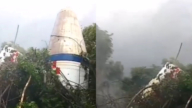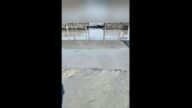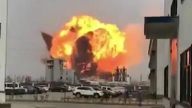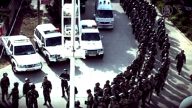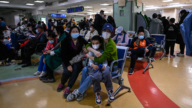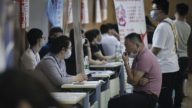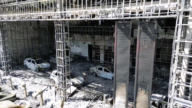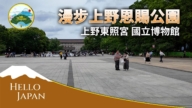【新唐人2013年12月17日訊】上海陰霾爆發,讓國內精英越發加強移民海外的念頭。中共當局治理陰霾無能為力,竟作出一項「掩耳盜鈴」之舉,那就是:上調陰霾警報的指數水平,以減少警報次數。
上海的精英人士因為陰霾嚴重而加強了移民海外的想法。
他們接受美國《華爾街日報》採訪者時,有的人表示﹕後悔回到中國,有的正在認真考慮移居海外,有的生意人正在考慮,在香港或新加坡設一個辦公室,還準備把孩子早點從學校領出來,去海外渡假。
上海的精英人士說:「陰霾的影響很大,因為不能自由呼吸的感覺真的很糟糕。」
隨著窒息上海的陰霾達到有害的水平,12月初,城市的環境當局採取一個行動來應對頻繁的空氣質量警報。美國《彭博社》10號報導,上海環境保護局決定降低發佈污染警報的標準,也就是,只在PM2.5的空氣懸浮微粒達到每立方米115微克濃度的時候,才會發佈警報。而先前的警報標準是每立方米75微克。
上海港務局退休職工殷偉偉:「這個弄虛作假,自欺欺人,他想要求降低以後,他可以報出來的級別看上去不是很嚴重。原來他制定超過多少指標要停課,工廠要停產。他如果標準降低以後,這個限制不是就寬了嗎?學校不用停課,工廠不用停產。他在自己騙自己,騙老百姓。」
上海居民許正清:「這種做法是掩蓋真相的做法,他根本就不是實事求是。而應該把事實真相告訴大家。應該採取更加預防的措施。從根本上解決一些問題。包括環境造成的污染問題。」
美國航天局的Terra衛星,在12月7號抓拍到一張圖像,顯示中國東部被陰霾包裹。厚重的陰霾從北京延伸到上海,大約1200公里的距離。
在這個圖像被抓拍的當天,美國駐北京大使館和美國駐上海領事館的污染監控儀,各自記錄到PM2.5的讀數為每立方米480和355微克。根據世界衛生組織制定的標準,空氣中PM2.5的濃度水平,應該低於每立方米25微克才被視為安全。
殷偉偉:「前兩天很厲害。看上去灰濛蒙的,黃的。太陽是黃顏色的,光很弱的。看遠處的建築都只是一個影子,看不清楚。」
許正清:「很黑暗。白天感覺倒過來了,好像黑夜的狀況。完全是看不清楚。人和人之間兩、三米之內都看不見。一下子好像沒有方向。特別是行車的,汽車開的很慢,生怕發生事故。」
「北京大學」研究指出,北京、上海、廣東和西安等大城市,2012年因為空氣污染而提早離世的人數,多達8,500人,經濟損失超過60億元人民幣。
有報導說,污染和PM2.5正每天一點點的削弱人體健康,中國民眾的身體每況愈下。大城市居民呼吸系統異常率明顯上升,四成三市民曾出現疲勞、暈眩、心悸、呼吸困難等心血管系統異常症狀。而人體吸入陰霾一段時間之後,肺臟都變成了黑色。
上海居民許正清表示,看到這些報導很擔憂。他平時盡量減少外出,出門戴口罩。
許正清:「會產生一些呼吸道上面的問題。比如感到呼吸困難,呼吸道鼻腔感覺很難受,你覺得你的咽喉有咽痛,心臟裡面感覺很壓抑。」
殷偉偉:「我有個表哥,他原來就有肺部纖維化的毛病。他前兩天就住了十幾天醫院。他雖然退休70多歲,我想肯定跟空氣質量也有關係。」
亞洲開發銀行與學術機構合作展開的一項研究顯示,陰霾帶給中國社會的經濟損失,單是交通癱瘓,以及疾病增加兩項,最高可能達到每年20萬億人民幣以上。
採訪編輯/秦雪 後製/鍾元
Shanghai Smog Drives Immigration
The increasingly severe smog in Shanghai
is making many people want to emigrate.
The Communist regime’s measure to “cure" the pollution is
to lower air quality standards to make alerts less frequent.
Shanghai’s elite are thinking about immigrating
overseas because of the ever increasing smog problem.
In an interview with Wall Street Journal,
some of them said they regret returning to China.
Some are considering having an office set up in Hong Kong
or Singapore, and planning an early vacation with the kids.
A Shanghai businessman told WSJ, “The smog had a big
impact, because it feels really bad if you can’t breathe freely."
As the smog in Shanghai last week reached hazardous levels,
the city’s environmental authority took decisive action
to address the frequent air-quality alerts.
According to a Bloomberg report on Dec. 10,
Shanghai’s Environmental Protection Bureau decided to
lower the benchmark for alerting the public about
pollution risks.
It will now issue alerts only when the concentration of the
most dangerous particulates in the city’s air, known as PM2.5
(particulates smaller than 2.5 micrometers in diameter)
reach 115 micrograms per cubic meter.
The previous standard was 75 micrograms per cubic meter.
Yin Weiwei, Shanghai port authority retiree:
“It is self-deception and deceiving others.
With a lower standard, it will seem to be not as serious.
At a certain level, schools and factories were required to close.
A lower standard means schools and factories will stay open.
They are lying to themselves and the people."
Xu Zhengqing, Shanghai resident: “It’s to cover up the reality.
They don’t care about the facts.
What’s needed are the facts and deciding how to handle them.
They should try solving issues from the root,
including environmental pollution."
According to NASA, China suffered another severe bout of
air pollution as shown in an image
from NASA’s Terra satellite on December 7.
Thick haze stretched from Beijing to Shanghai,
a distance of about 1,200 kilometers.
NASA reported, “On the day this natural-color image
was acquired by Terra, ground-based sensors
at U.S. embassies in Beijing and Shanghai reported PM2.5
measurements as high as 480 and 355 micrograms
per cubic meter of air, respectively.
The World Health Organization considers PM2.5 levels
to be safe when they are below 25.
Yin Weiwei: “It was very severe two days ago.
It looked very much gray and yellow.
The sun is yellow but light beams are weak.
All you could see of buildings at a distance were shadows."
Xu Zhengqing: “Very dark. Day felt like night.
You can’t see anything clearly at all.
You won’t see the person as close as two to three meters away.
There is no sense of direction.
The motorists have to drive very slowly to avoid accidents."
According to a 2012 study by Peking University, air pollution
led to the untimely deaths of up to 8,500 people and economic
losses of over 6 billion yuan ($988 million) in major cities
such as Beijing, Shanghai, Guangdong and Xi’an.
It is reported that the pollution and particles of PM2.5 are
weakening China’s civilians’ health little by little every day.
Abnormal respiratory problems are increasing among
urban residents, 43% of them have experienced
cardiovascular abnormalities such as fatigue, dizziness,
palpitations, and difficulty breathing.
Prolonged inhaling of the haze makes lungs turn black.
Shanghai resident Xu Zhengqing says he worries about
the smog reports.
He tries not to go out and always wears a mask.
Xu Zhengqing: “It leaves you with respiratory problems,
such as difficulty breathing, great discomfort in the nasal
passages, you’ll feel you have a sore throat,
and the heart feels very depressed."
Yin Weiwei: “My cousin has pulmonary fibrosis.
He was hospitalized two days ago.
Though he is 70-years-old and retired,
I think it definitely also has to do with the air quality."
A study by the Asian Development Bank shows that,
considering the traffic gridlock and increased illnesses alone,
the annual economic loss the smog brings to Chinese society
could reach over 20 trillion yuan ($3.29 trillion).
Interview & Edit/QinXue Post-Production/ZhongYuan


